Fix Mac With Black Screen but With Mouse
How to fix a black screen with cursor in Windows 10
Milan has been enthusiastic about PCs ever since his childhood days, and this led him to take interest in all PC-related technologies. Before joining WindowsReport, he worked as a front-end web developer. Read more
Updated: Posted: March 2021
- Most of the time the black screen with cursor error occurs before login on Windows 10.
- In this case, you might want to try using a specific repair tool to get rid of the Windows 10 black screen with cursor after update.
- Another solution would be to update your drivers, and we have the perfect tool to help you, check it out below!
- Also, it may be necessary to take some action in the BIOS. To make sure you don't do anything wrong, read the whole article!
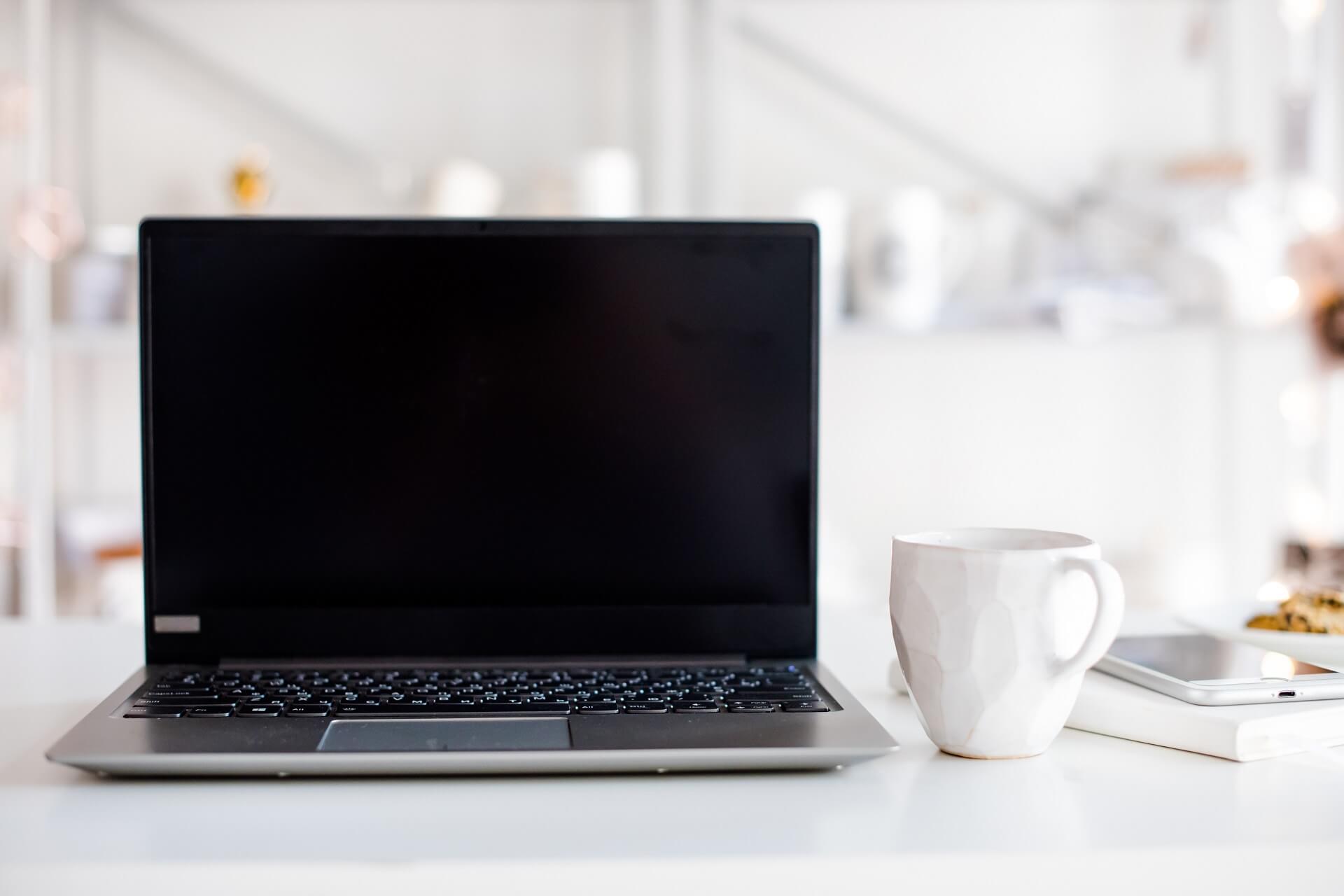
XINSTALL BY CLICKING THE DOWNLOAD FILE
Users have reported that they are getting black screen with cursor on Windows 10. Let's see how to fix this problem, so keep reading!
You can also watch our video troubleshooting guide below to learn what methods to use in order to fix black screen issues on Windows 10.
https://www.youtube.com/watch?v=EQCfwiDjXfgu0026amp;amp%3Bfeature=youtu.be
How do I fix the Windows 10 black screen with cursor error?
- Update your drivers
- Use Windows Key + P shortcut to switch displays
- Uninstall your graphic card driver
- Disable onboard graphics from Device Manager
- Disable Dual monitor from BIOS / disable CPU Graphics Multi-Monitor
- Connect your monitor with both cables to your computer / connect additional monitor
- Update your BIOS
- Uninstall problematic applications
- Change display brightness
- Disconnect your second monitor
- Disable Secondary Output from Device Manager
- Set display output to IGFX
- Connect your monitor using HDMI
- Disable / enable dedicated card from BIOS
- Check your graphic card settings in BIOS
- Remove computer battery and reset your BIOS
- Disable Fast Startup
- Check additional displays
- Connect your monitor to integrated graphic card
- Uninstall problematic software before upgrade
- Start File Explorer with administrative privileges
1. Update your drivers
- Typedevice in the search bar and click onDevice Manager.
- In the Device Manager expand theDisplay Adapter section.
- Right-click on your graphics device and selectUpdate Driver.
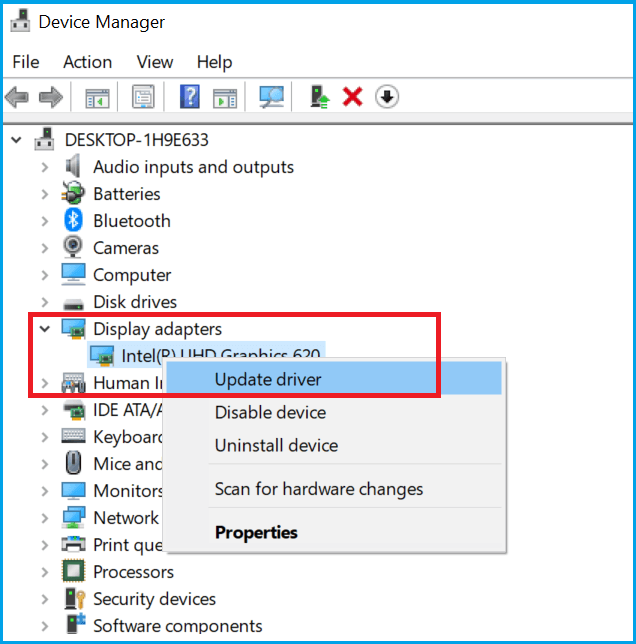
- SelectSearch automatically for updated driver and software option.

- Windows will now search for any pending update and download it.
- Once the update is installed, check if Windows 10 fit the screen.
Updating drivers manually is a serious procedure that can be a bit time-consuming, and it does not give you the assurance that the system will find the latest drivers.
You can update your drivers by using a special third-party software tool. We recommend using dedicated software because they can automate the task almost entirely, saving a lot of time and hassle.
A good and reliable tool to try is DriverFix. It is a lightweight driver updater software that can automatically detect when your drivers need to be updated.
The tool always matches your hardware with the suitable driver, so you do not have to worry about any errors in that regard. On top of that, it can detect and fix any broken or missing drivers on your PC.
DriverFix is easy to install and use since its whole aim is to make an easier user experience. After you install and run it, check to see if the problem persists.
2. Use Windows Key + P shortcut to switch displays
- PressWindows Key + P shortcut to open the Project menu.
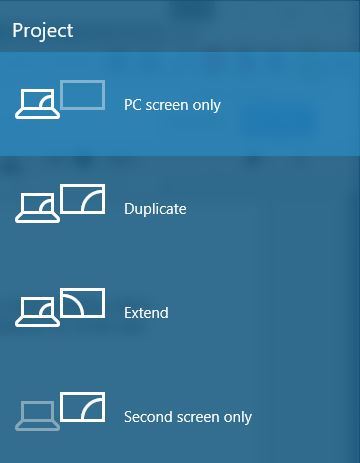
- Project menu will now open, but you won't be able to see it. Don't worry, that's perfectly normal.
- Now press the up or down arrow key a few times and press Enter.
- If you are successful, your screen should appear. If your screen doesn't appear, you might have to repeat this step a few times.
If you're getting a black screen before login on to Windows 10, you might want to try using Windows Key + P shortcut to change the primary and secondary monitors.
For some reason, after updating to Windows 10, your project mode might change to Second screen only, and you need to change that by following our instructions.
We've had this issue, and it was fixed after 6 or 7 tries, so it is crucial that you be persistent.
We have to mention that if your account is protected by a password, you'll have to log in first. To do this, press Space or Ctrl, enter your password, and press Enter.
This can be tricky, because you'll be doing this on a black screen, so it might take you a few tries.
3. Uninstall your graphic card driver
- Press File, and select Run new task.
- Enter devmgmt.msc, and press Enter to run it.

If you have black screen with cursor issues, you can try pressing Ctrl + Alt + Del in order to start Task Manager. From Task Manager you'll be able to start Device Manager.
If you can't open it, you might have to access Safe Mode and uninstall install display drivers from there. To access the Safe Mode, do the following:
- While your computer boots keep pressing F4 or F8 (it might be a different key on your PC) to access Boot Options.
- Choose Troubleshoot, select Advanced Options, and choose Startup Settings.
- Your PC will now restart, and you'll be presented with a list of options. Choose Safe Mode with Networking (or any other Safe Mode option).
In order to uninstall the drivers, follow these steps:
- Press Windows Key + X, and choose Device Manager from the list.

- When Device Manager opens, locate your graphic card, right click it and choose Uninstall. If asked, make sure that you check Delete driver software for this device.
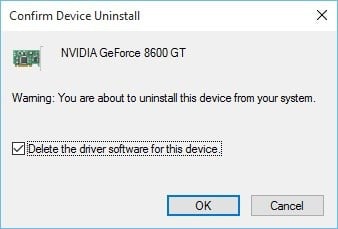
- After you've uninstalled the driver, restart your PC. Windows 10 should start normally and black screen issue should be fixed.
4. Disable onboard graphics from Device Manager
- Locate your onboard graphics.
- Right click it and from the menu choose Disable.
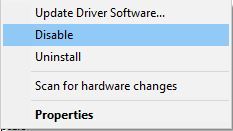
- Restart your PC, and check if the issue still persists.
If your computer has both onboard and dedicated graphics, make sure that you disable your onboard graphic from Device Manager.
To do that, you might have to access Safe Mode, if your Windows 10 won't load. If Safe Mode won't accept your password, easily fix it by following our guide.
5. Disable Dual monitor from BIOS/disable CPU Graphics Multi-Monitor
- While your computer boots press F2 or Del (it might be a different key on your computer) to access BIOS.
- When BIOS stats you need to find and disable CPU graphics function or Dual monitor function.
- Save changes and restart your PC.
Also, if you have the CPU Graphics Multi-Monitor option, it's also suggested that you disable it in order to fix this issue. After you've disabled this option, save changes and restart.
6. Connect your monitor with both cables to your computer/connect additional monitor
This is a bit of an unusual solution, but users have reported that it fixes the black screen before login problem.
According to users, if you have a monitor with two connectors, such as DVI and HDMI, you need to connect your monitor using both DVI and HDMI cable.
After you've done that, you can turn on your computer and check if the problem is resolved.
Some users also suggest that you might be able to fix this issue by attaching an additional monitor, so if you have an extra monitor, try connecting it to your PC.
Even if this doesn't fix the problem, your second monitor should work without any problems.
7. Update your BIOS
Some users claim that you can fix the black screen with the cursor after the update by updating your BIOS.
Updating BIOS is a procedure for advanced users, and if you don't do it properly, you can cause permanent damage to your hardware, so please keep that in mind.
In order to perform a BIOS update, you need to go to your motherboard manufacturer's website and download the latest version of BIOS for your motherboard.
In most cases, there should be an instruction manual on how to update your BIOS, so make sure that you read it carefully.
If you don't know how to update your BIOS, please ask an expert to do it for you in order to avoid any potential damage.
If you want to update BIOS on Windows 10 yourself, just follow the exact steps from our guide to make sure that everything will go as planned.
8. Uninstall problematic applications
- Press Ctrl + Shift + Esc to start Task Manager.
- Click File, and select Run new task.

- Enter appwiz.cpland press Enter to run it.

- Programs and Features window will now open, and you'll be able to uninstall problematic applications.
If you have issues with black screen with cursor after Windows 10 update, then find out that certain applications such as antivirus, third-party firewall, iCloud, Cisco VPN client, or IDT Audio, can cause this problem.
In order to fix this problem, it's advised that you uninstall those applications from your PC.
If you can't access Task Manager, you should enter Safe Mode and try this solution again.
Expert Tip: Some PC issues are hard to tackle, especially when it comes to corrupted repositories or missing Windows files. If you are having troubles fixing an error, your system may be partially broken. We recommend installing Restoro, a tool that will scan your machine and identify what the fault is.
Click here to download and start repairing.
Sometimes, these applications can leave their files in system32 directory (for example, IDT Audio creates IDTNC64.cpl file and moves it to system32 folder).
In order to completely fix this problem, you might have to find the problematic file and delete it manually or by using Command Prompt.
Be very careful while doing this, because you don't want to delete any core Windows 10 files.
However, you can also count on third-party uninstaller software that remove problematic applications and automatically cleans up leftovers from your device, even those left behind by other software.
9. Change display brightness
- Press the Windows Key + X, and type Power Options.
- Choose Power Options from the menu.
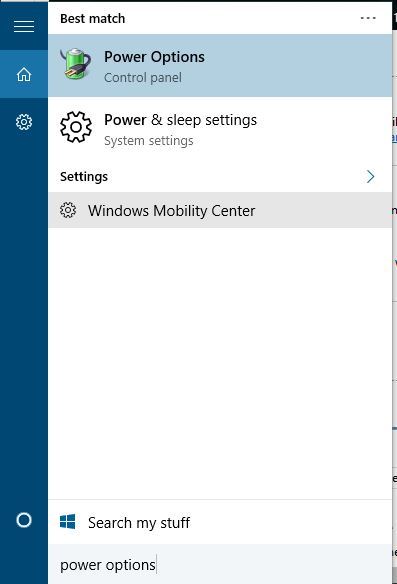
- Find your current plan, and click Change plan settings.
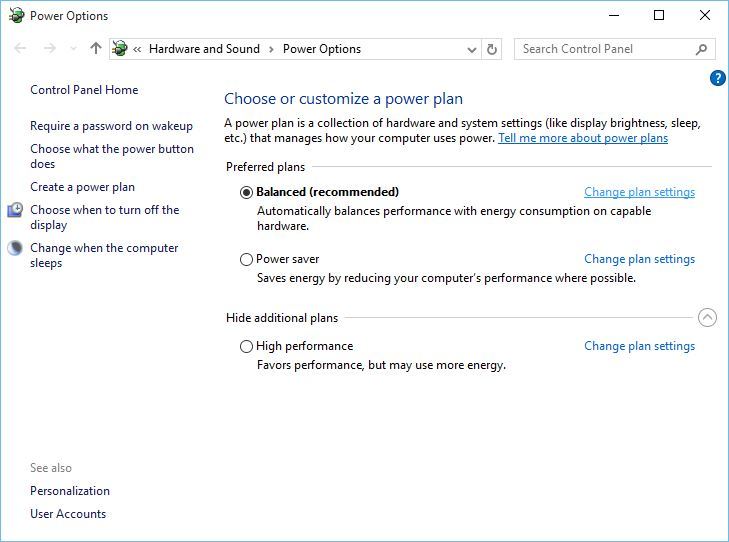
- Now click on Change advanced power settings.
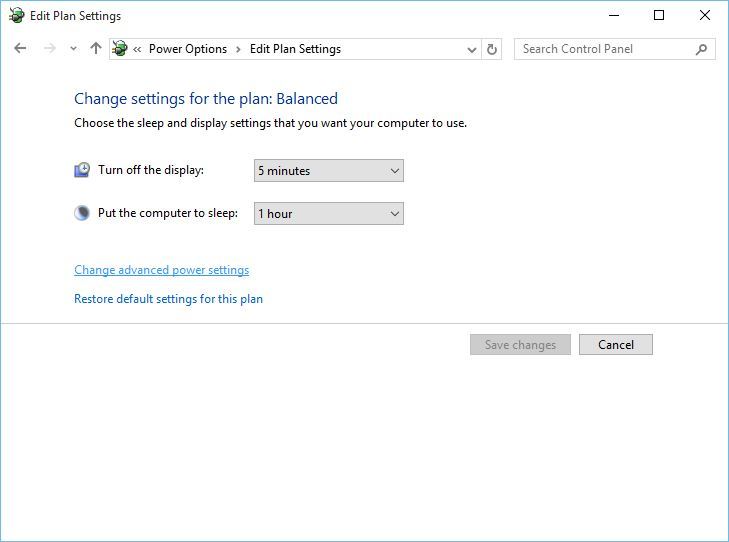
- Locate Display brightness setting and make sure that you set display brightness to 99% or 98% when your device is plugged in.
- Save changes and restart your PC.
Users have reported that they are having issues with black screen on Windows 10 after they connect the AC adapter to their laptop.
In most other cases, the laptop works fine, but after the user connects the AC adapter, the screen goes dark. This is caused by the display brightness problem, and you can fix it by following thee above steps.
If you are having trouble changing the display brightness, then you should take care of that error before proceeding to this method.
10. Disconnect your second monitor
In certain cases, black screen with cursor on Windows 10 can be fixed by unplugging your second monitor.
Nvidia users have reported that unplugging the second monitor has fixed this issue for them, so make sure that you try it out.
11. Disable Secondary Output from Device Manager
- Open Device Manager.
- Find and expand the Display Adapters section.
- Click View, and select Show hidden devices.
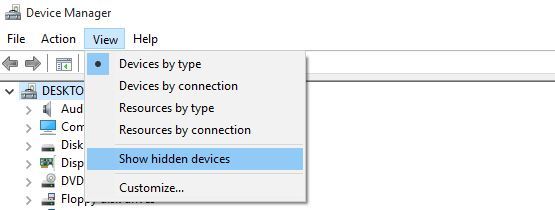
- Locate Secondary Output, right-click it and choose Disable.

- Restart your PC, and check if the issue is resolved.
If you have a black screen with cursor problem, you can try to disable Secondary Output. We have to warn you that this can happen if you use two or more monitors on your PC.
12. Set display output to IGFX
- While your computer boots keep pressing F2, F4 or Del key to access BIOS.
- Locate the Display output setting, and set it IGFX. This will make your integrated graphics the first display.
- Save changes and exit.
Some users have reported that they have managed to fix the black screen with cursor before login by changing display output to IGFX in BIOS.
13. Connect your monitor using HDMI
- Open Settings app and choose System.
- Go to Display section.
- You should see several displays available. Select the display you wish to use as the main one and click Make this my main display.
- Click Apply to save changes.
If you have problems with black screen with cursor before login on Windows 10, you might want to try connecting your monitor to your PC with HDMI cable.
Users have reported that you can use HDMI connection instead of DVI and it will fix black screen issues.
If you connect both HDMI and DVI cables, your PC might see the DVI connection as the second monitor (even if you have only one monitor), and if that's the case, you need to set your main display.
14. Disable/enable dedicated card from BIOS
Some users have reported that enabling or disabling dedicated graphics fixes this issue for them. To do that, you need to enter BIOS and locate Graphic settings.
Now you can choose between Switchable or Discreet option, depending on which one you want to use. If you want to enable a dedicated graphic card, choose the Discreet option.
We have explained how this process looks on one of our devices, but it might be completely different for your device. If that's the case, you should check your instruction manual.
15. Check your graphic card settings in BIOS
Enter BIOS and make sure that your graphic card is set to use PCI-E slot. Sometimes this setting might get changed to PCI, and if that's the case, just switch it to PCI-E option and save the changes.
16. Remove computer battery and reset your BIOS
If other solutions don't work, you might want to remove your computer's battery and reset your BIOS. By doing this, you'll break your warranty, so keep that in mind.
If you don't know how to do this properly, maybe it's best to hire an expert to do it for you.
17. Disable Fast Startup
- Go toControl Panel, and select System and Security.
- Choose Power options, and go to Choose what the power button does.
- Change settings that are currently unavailable, and uncheck the option Turn on fast startup (recommended).
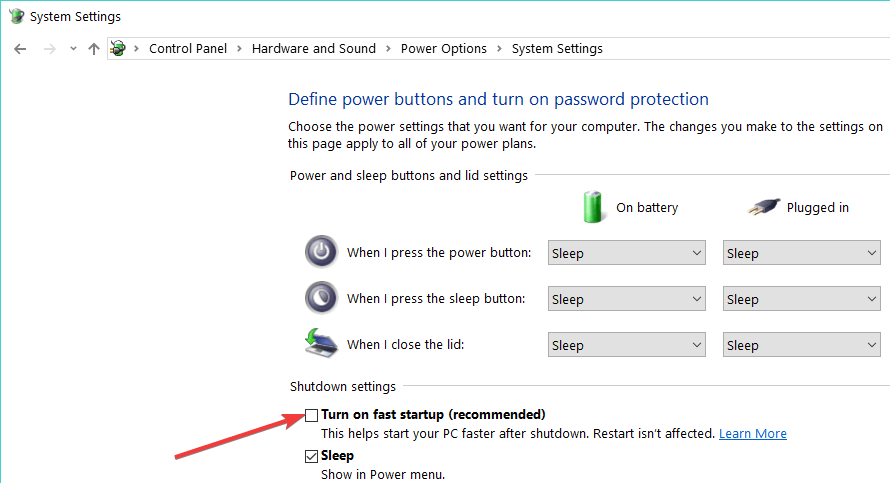
In some cases, Fast Startup may trigger black screen issues. In this is the case, then you can quickly fix this problem by simply disabling this option.
18. Check additional displays
Make sure that you don't have other displays such as monitors or even your TV connected to your HDMI port.
If you have a device connected to HDMI port, Windows 10 might use it as the main display during the installation, so before you start your installation, make sure that you're using only one display.
In addition, you can always connect your monitor using the HDMI cable in order to fix this problem, or you can just disconnect the other display.
19. Connect your monitor to integrated graphic card
In certain situations, Windows 10 might not recognize your dedicated graphic card, so the only solution is to connect your monitor directly to your integrated graphic card.
After doing that, black screen with cursor problem will be fixed.
Using your integrated graphics card is not such a big deal. Still, if you need more power, and you don't want to use the dedicated card, you can increase the VRAM on your integrated one by following our guide.
20. Uninstall problematic software before upgrade
If you're planning to upgrade to Windows 10, you might experience a black screen with cursor problem during installation if you don't delete certain programs.
Sometimes your antivirus or firewall can cause this problem during the installation, so you might want to temporarily remove them.
In addition, if you use any tools that change the looks of your Windows, such as OldNewExplorer or ClassicShell, you should also uninstall them before upgrading to Windows 10.
21. Start File Explorer with administrative privileges
- After logging in, right-click the Start button and select Task Manager.
- Click on File on the top left corner and select Run new task.

- Select %localappdata% from the list and make sure you click the Create this task with administrative privileges box, then click OK.
As bizarre as it may seem, some users fixed the issue by starting a File Explorer with administrative privileges so you might as well try that too.
As you can see, the black screen with cursor on Windows 10 can create many problems, but in most cases, you can fix it by disconnecting additional monitors, or by connecting your monitor to a different port.
Tell us if our solutions have helped you solve this annoying problem by referring to the comment section below.
![]()
Newsletter
Fix Mac With Black Screen but With Mouse
Source: https://windowsreport.com/windows-10-black-screen-cursor/
0 Response to "Fix Mac With Black Screen but With Mouse"
Post a Comment